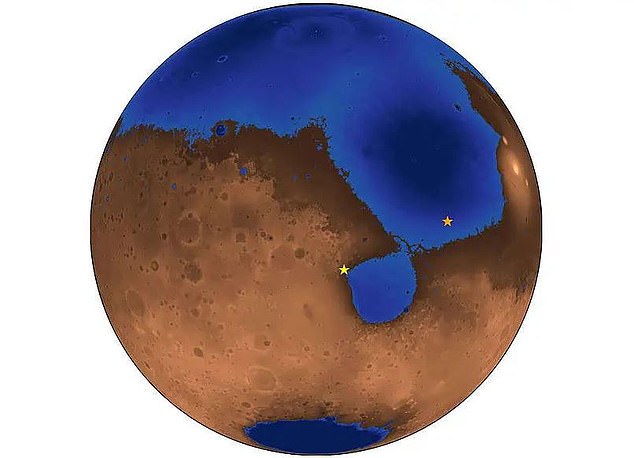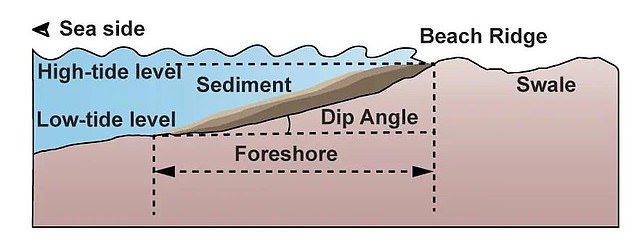It might not be the most obvious place for a holiday.
But Mars was once home to sun-soaked, sandy beaches with gentle, lapping waves, according to a new study.
Researchers have discovered evidence of a ‘vacation-style’ environment on the Red Planet, despite there being no visible liquid on the surface of Mars today.
An international team of scientists used data from China‘s Zhurong Mars rover to unearth hidden layers of rock underneath the planet’s surface that strongly suggest the presence of an ancient northern ocean.
The new research offers the clearest evidence yet that the planet once contained a significant body of water and a more habitable environment for life, the researchers said.
The Zhurong rover landed on Mars in 2021 in an area known as Utopia Planitia and sent back data on the geology of its surroundings in search of signs of ancient water or ice.
Unlike other rovers it came equipped with ground-penetrating radar which allowed it to explore the planet’s subsurface, using both low and high-frequency radar to penetrate the Martian soil and identify buried rock formations.
By studying the underground sedimentary deposits, scientists are now able to piece together a more complete picture of the planet’s history.

Researchers have discovered evidence of a ‘vacation-style’ environment on the Red Planet, despite there being no visible liquid on the surface of Mars today

The new research offers the clearest evidence yet that the planet once contained a significant body of water and a more habitable environment for life, the researchers said
When the team reviewed radar data, it revealed a similar layered structure to beaches on Earth.
They noticed formations called ‘foreshore’ deposits’ that slope downwards towards oceans and form when sediments are carried by tides and waves into a large body of water.
When the team compared the Martian data with radar images of coastal deposits on Earth, they found striking similarities.
The dip angles observed on Mars fell right within the range of those seen in coastal sedimentary deposits on Earth.
The discovery indicates that Mars was once a much wetter place than it is today, further supporting the hypothesis of a past ocean that covered a large portion of the northern pole of the planet, the researchers said.
The study also provides new information on the evolution of the Martian environment, suggesting that a life-friendly warm and wet period spanned potentially tens of millions of years.
Co-author Benjamin Cardenas, from Penn State University, said: ‘We’re finding places on Mars that used to look like ancient beaches and ancient river deltas.
‘We found evidence for wind, waves, no shortage of sand — a proper, vacation-style beach.’

The study also provides new information on the evolution of the Martian environment, suggesting that a life-friendly warm and wet period spanned potentially tens of millions of years
Professor Michael Manga, from the University of California, Berkeley, also contributed to the paper.
‘The structures don’t look like sand dunes,’ he said. ‘They don’t look like an impact crater. They don’t look like lava flows. That’s when we started thinking about oceans.
‘The orientation of these features are parallel to what the old shoreline would have been. They have both the right orientation and the right slope to support the idea that there was an ocean for a long period of time to accumulate the sand-like beach.’
The findings were published in the Proceedings of the National Academy of Sciences journal.











